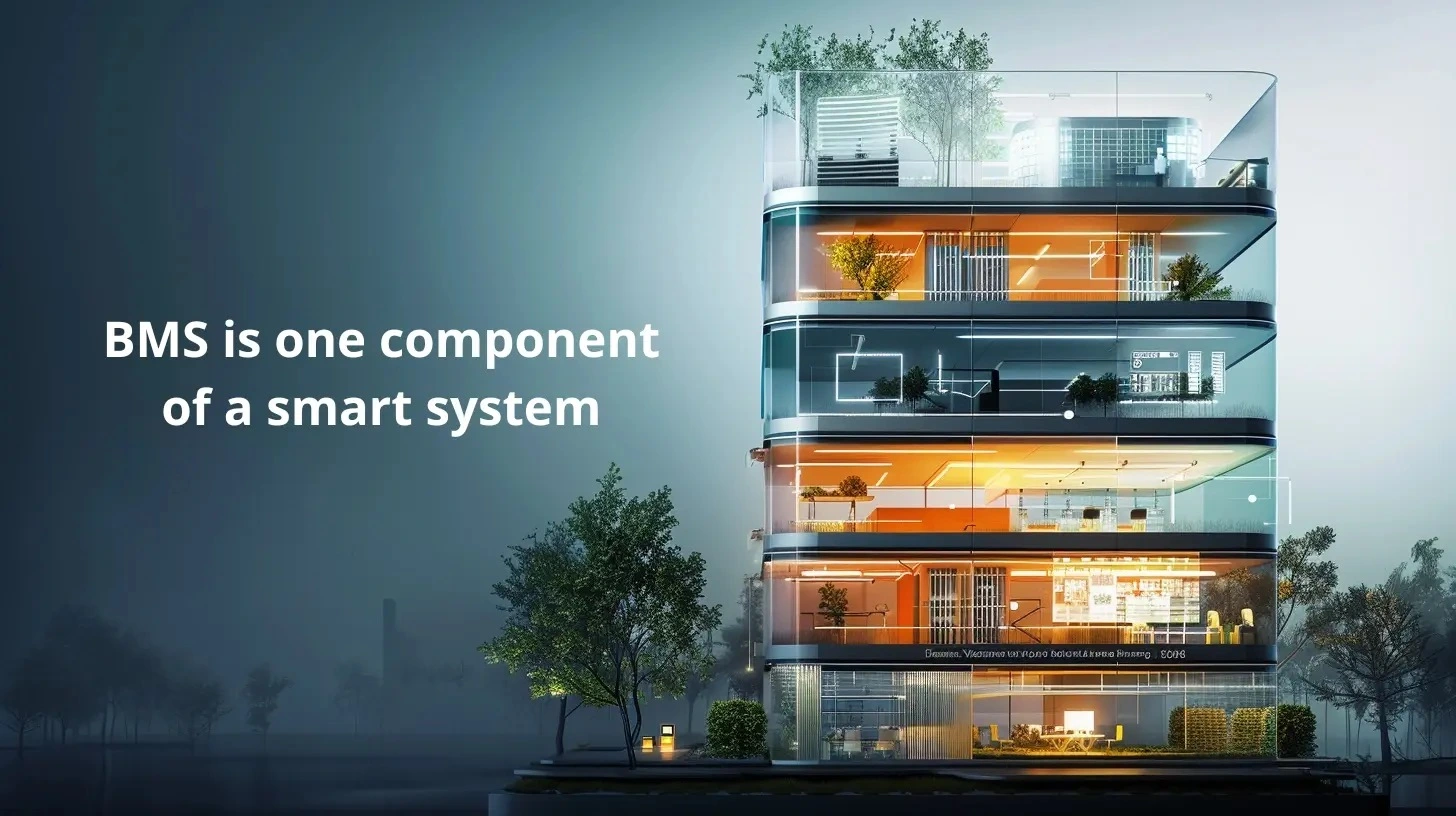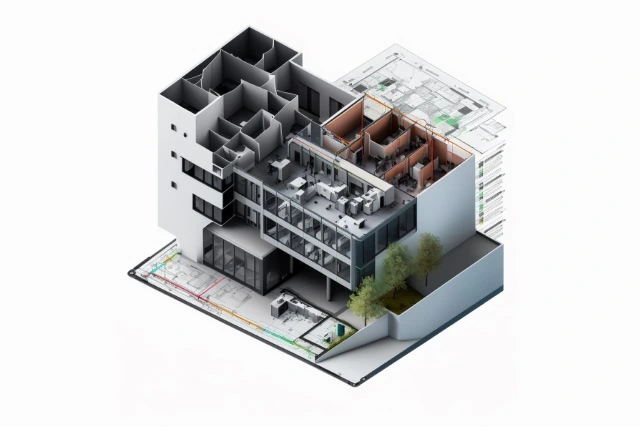Property owners strive to minimize operational expenses and ensure tenant safety and comfort. By connecting facility systems (IoT technology) and controlling them from one place, building management systems can make for a smart building and enable property owners to find hidden opportunities.
What is Building management systems (BMS)?
Building management systems (BMS) or building automation systems (BAS) are designed to manage and monitor various subsystems in commercial building installations effectively. The principal aim of the BMS is to streamline operations, making them easier to manage, monitor, and improve. Subsystems may include the building’s electrical and mechanical equipment, like power, lighting, and ventilation.
Future trends in BMS: IoT, AI, and sustainability
The evolution of technology and the world at large is bringing forth more sophisticated and intelligent building management systems (BMS) that have the potential to impact the environment positively. Building management is set to be revolutionized by integrating the Internet of Things (IoT), artificial intelligence (AI), and sustainability initiatives.
Emerging technologies
IoT is the interconnectivity of physical devices, buildings, and other objects through the internet, allowing for the exchange of data and information. IoT systems and applications are implemented beyond the scope of building management systems, making building information management (BIM) a critical element.
AI significantly impacts building management systems by analyzing vast amounts of data collected by IoT devices to optimize building performance. For example, AI algorithms can predict occupancy patterns, which can be used to adjust heating, cooling, and lighting systems in real-time, leading to energy savings and improved occupant comfort.
AI can also detect potential problems in building systems before they occur, preventing downtime, reducing maintenance costs, and extending the lifespan of building equipment.
Building management systems can be designed to be more sustainable by incorporating features such as energy-efficient lighting, HVAC systems, and renewable energy sources like solar panels. IoT and AI can also be used to optimize energy consumption and reduce waste, leading to more environmentally friendly building management.
Dr. Erik Wallin, founder, and chief ecosystem officer at ProptechOS mentions:
Future trends in building management systems are set to change how buildings are currently managed and operated. By incorporating these emerging technologies and sustainability features, building management systems will become an essential component of a smart city, creating a smarter and more comfortable environment for occupants. Proptech and sustainability go hand in hand.
How do building management systems work?
Smart buildings require complex monitoring of IoT networks that control the building system. Property owners can manage, monitor, and improve operations via building management systems or BMS user interfaces. A smart building can seamlessly integrate with other buildings, becoming an essential component of a smart city.
The main components of a BMS
Building management systems consist of three primary components, as listed below:
- Hardware
- Software
- Networking components
The hardware used in a BMS includes workstations, servers, sensors, and cables, to name a few components. The software includes programming and configuring tools, graphics, and user interfaces. The networking components cover the subsystems controlled by building management systems.

BMS is one component of a smart system
Building information modeling (BIM) provides the building’s digital blueprint at the core, while IoT enables device interconnectivity for real-time efficiency and enhanced occupant experience. BMS controls and optimizes building services like HVAC using data from BIM and IoT. Business Process Data analyses operational aspects for improved performance. Proptech Applications utilize all data sources to offer specific functionalities, making the entire system smarter and more value-driven. These elements create a seamless, efficient, and intelligent building ecosystem.
The benefits of building management systems for building owners
Important properties, in this sense, are all the subsystems in a building that building management systems can control. Any device with an IoT sensor can be connected. The BMS typically runs HVAC. Other important techniques can be connected, including lighting, power systems, and security devices.
Understanding HVAC in building management:
HVAC stands for Heating, Ventilation, and Air Conditioning. It is very common to run HVAC via the BMS. Below, we are taking a brief look at each of the elements.
Efficient heating through smart building management:
To enhance efficiency, traditional heating controllers need to adapt to dynamic conditions, including changes in outside temperature patterns. By intelligently adjusting the heat to these conditions, costs can be reduced, and tenants’ comfort can be secured.
Smart ventilation for enhanced air quality and energy savings:
Factors like occupancy, outdoor thermal and air quality conditions, electricity grid needs, direct sensing of contaminants, and operation of other air-moving and air-cleaning systems can trigger responses from smart ventilation.
Optimizing air conditioning:
Air conditioning is frequently misused in large buildings, leading to considerable energy waste. Using this smart can give major results in cost reduction and sustainability.
An open-source-based standard for integration is necessary
Property owners often need to integrate other systems within a building to become data-driven. The BMS and its data aren’t always enough. Other IoT systems and applications are frequently implemented beyond the scope of building management systems. Building information management (BIM) is crucial. The industry must create a digital twin of the building and effectively and flexibly develop applications based on all types of data to develop and reach tenants’ expectations.
Different open-source standards exist that will allow us to achieve the above. The most comprehensive standard is RealEstateCore.
RealEstateCore is a standardized way of naming and categorizing real estate data, making it possible to compare the information of different buildings. It also allows visualization of property data in formats like 3D models. Standardized communication from various technical real estate and external IT systems is enabled, creating opportunities for advanced data analysis, efficient application development, intelligent control, and building monitoring.
In conclusion, integrating IoT, AI, and sustainability initiatives is shaping the future of building management systems, leading to a smarter, more efficient, and environmentally friendly future.
Do you want to learn more about advanced BMS systems? Read our semantic modelling 101 for BMS engineers.

Dr. Erik Wallin
Chief Ecosystem Officer, and founder of ProptechOS and RealEstateCore is recognized as a leader in Building Operating Systems (BOS) and making the buildings of the world smarter. He holds an MSc and a Ph.D. in Media and Computer Science from KTH Royal Institute of Technology.
Read his full bio and information here.

